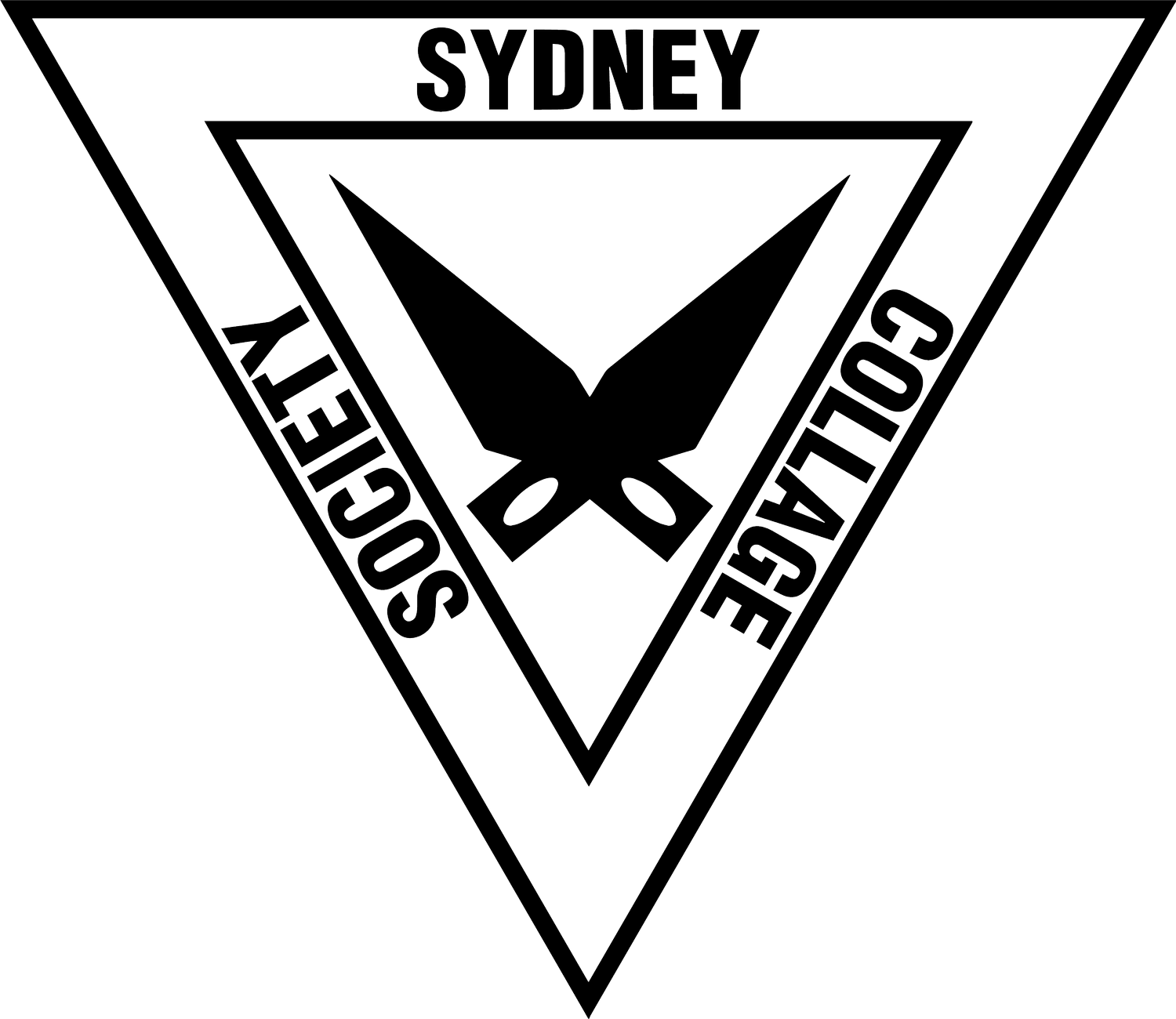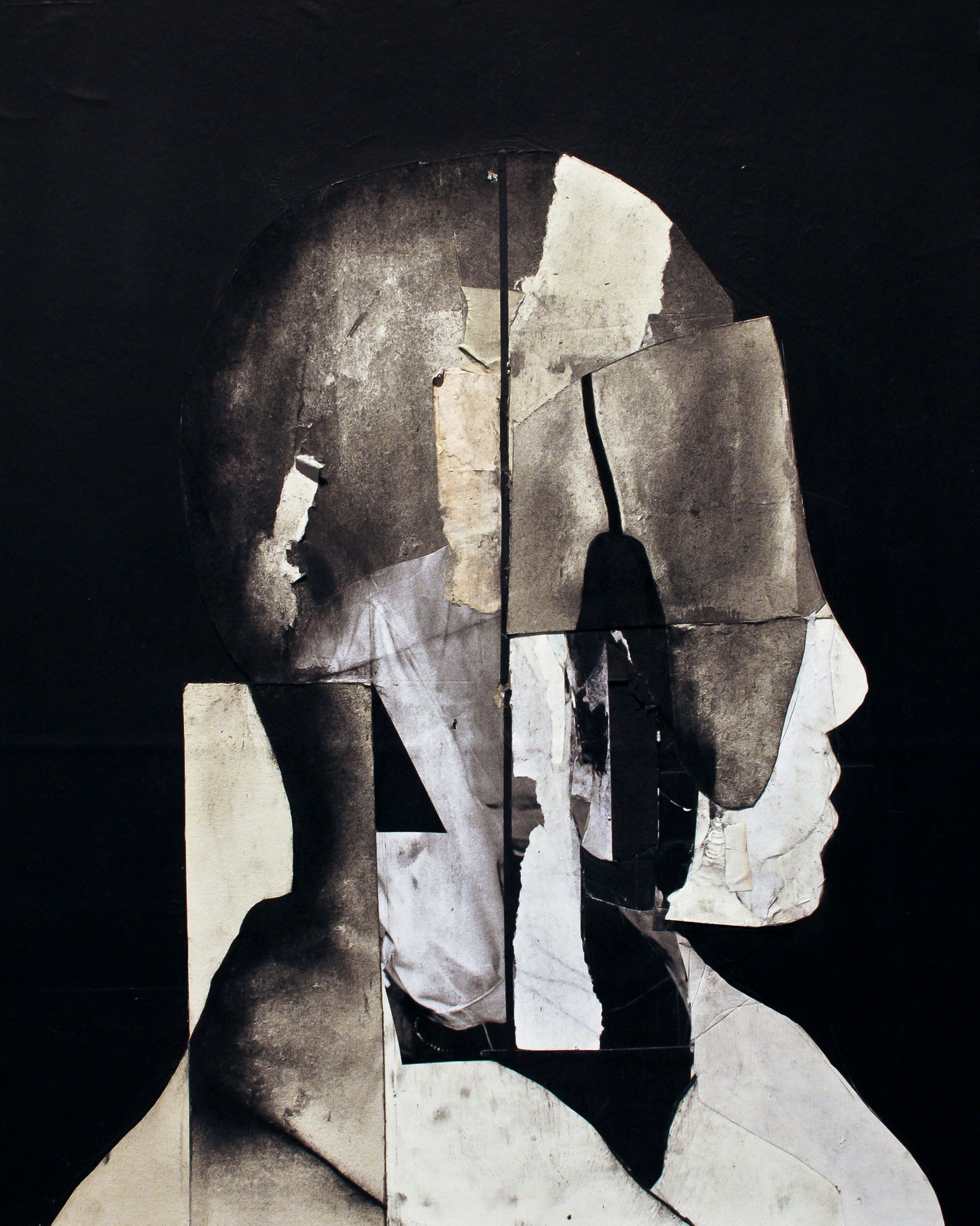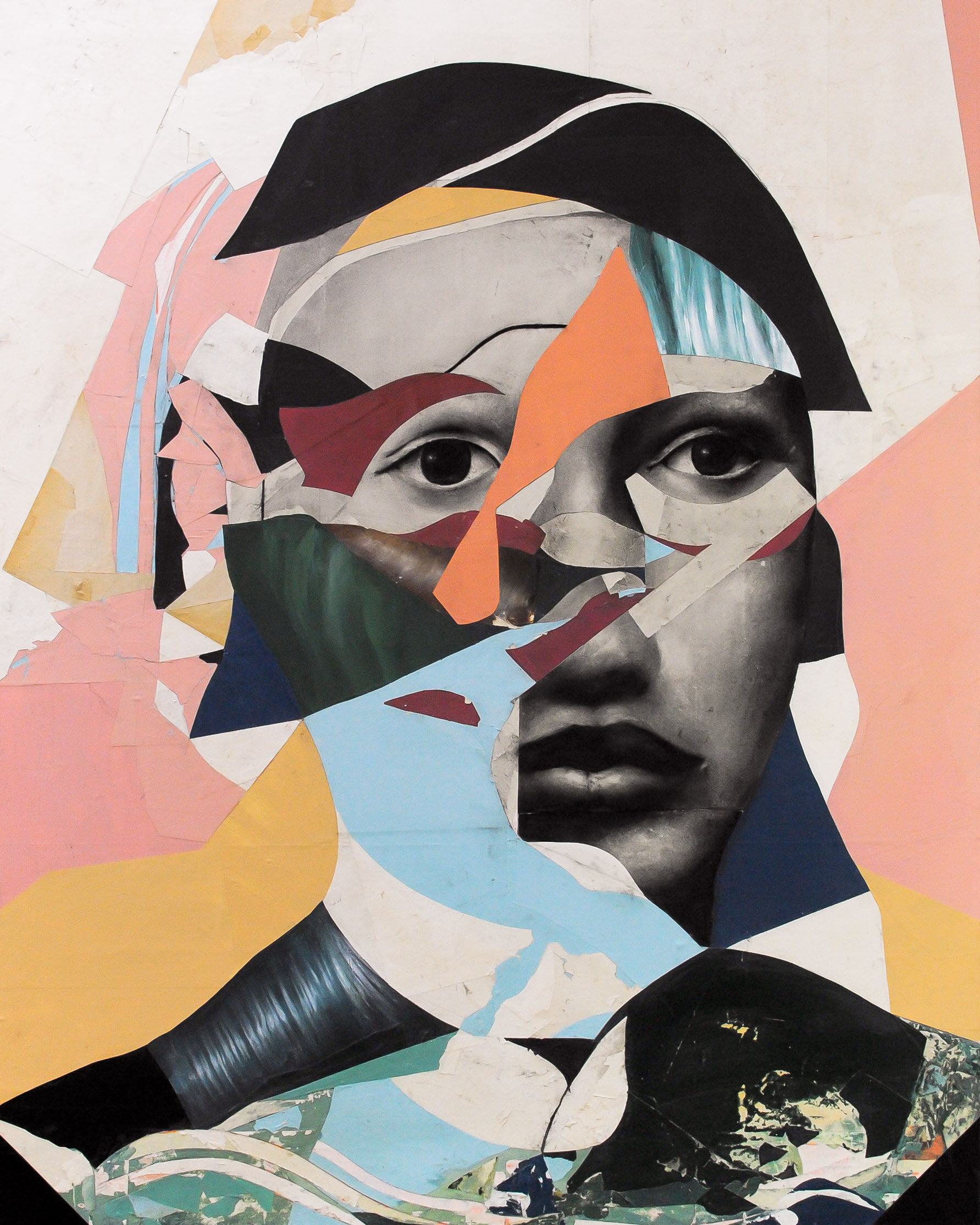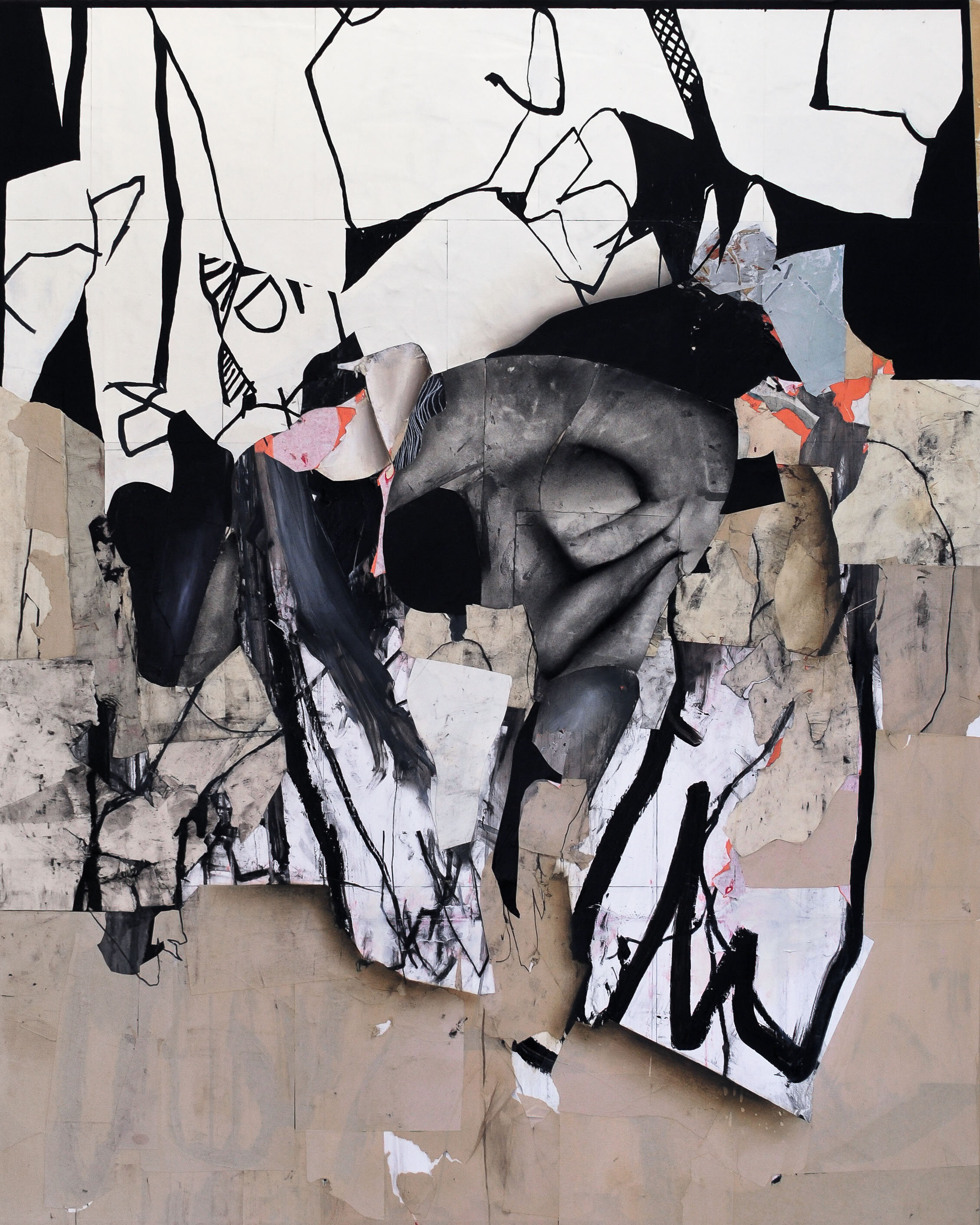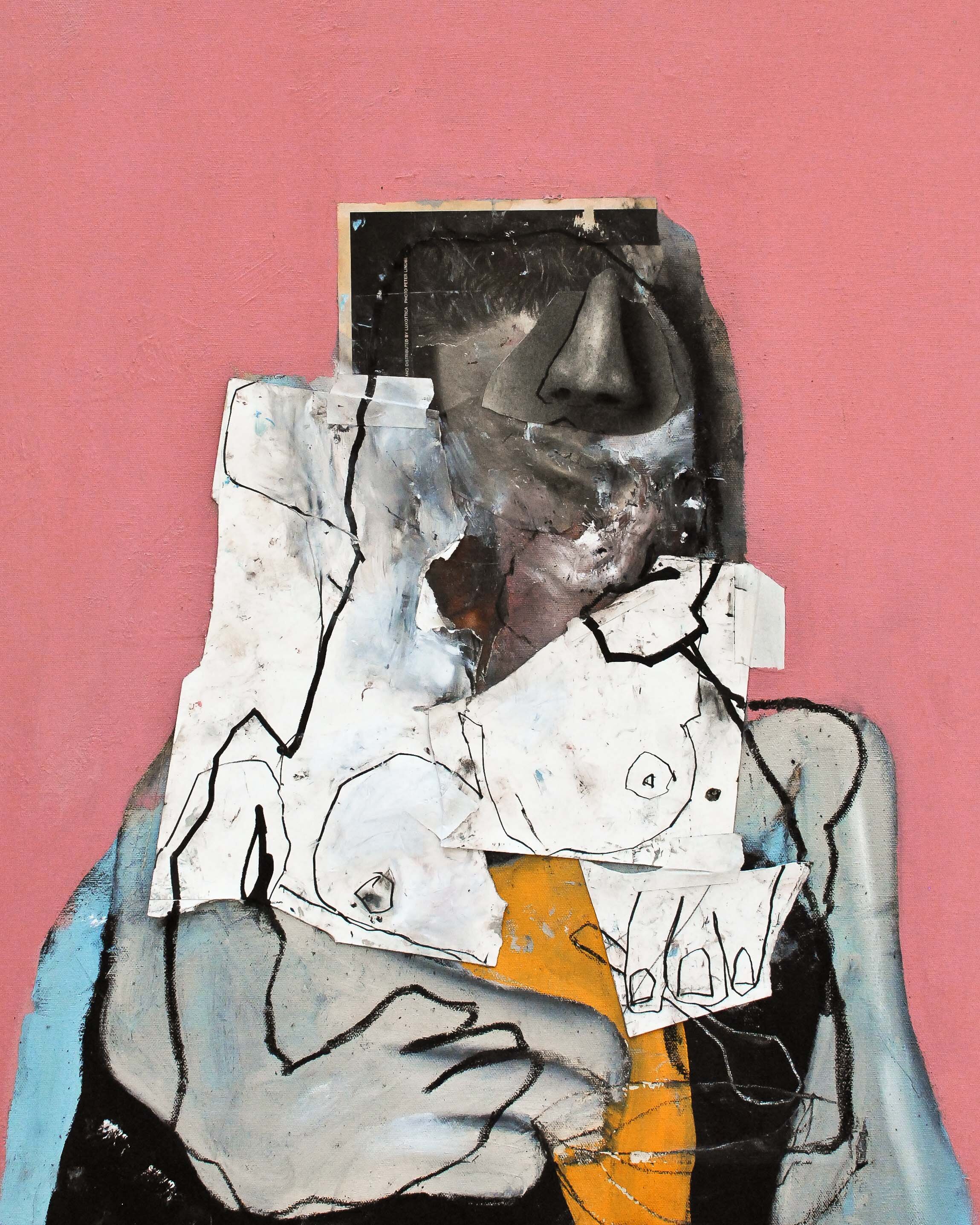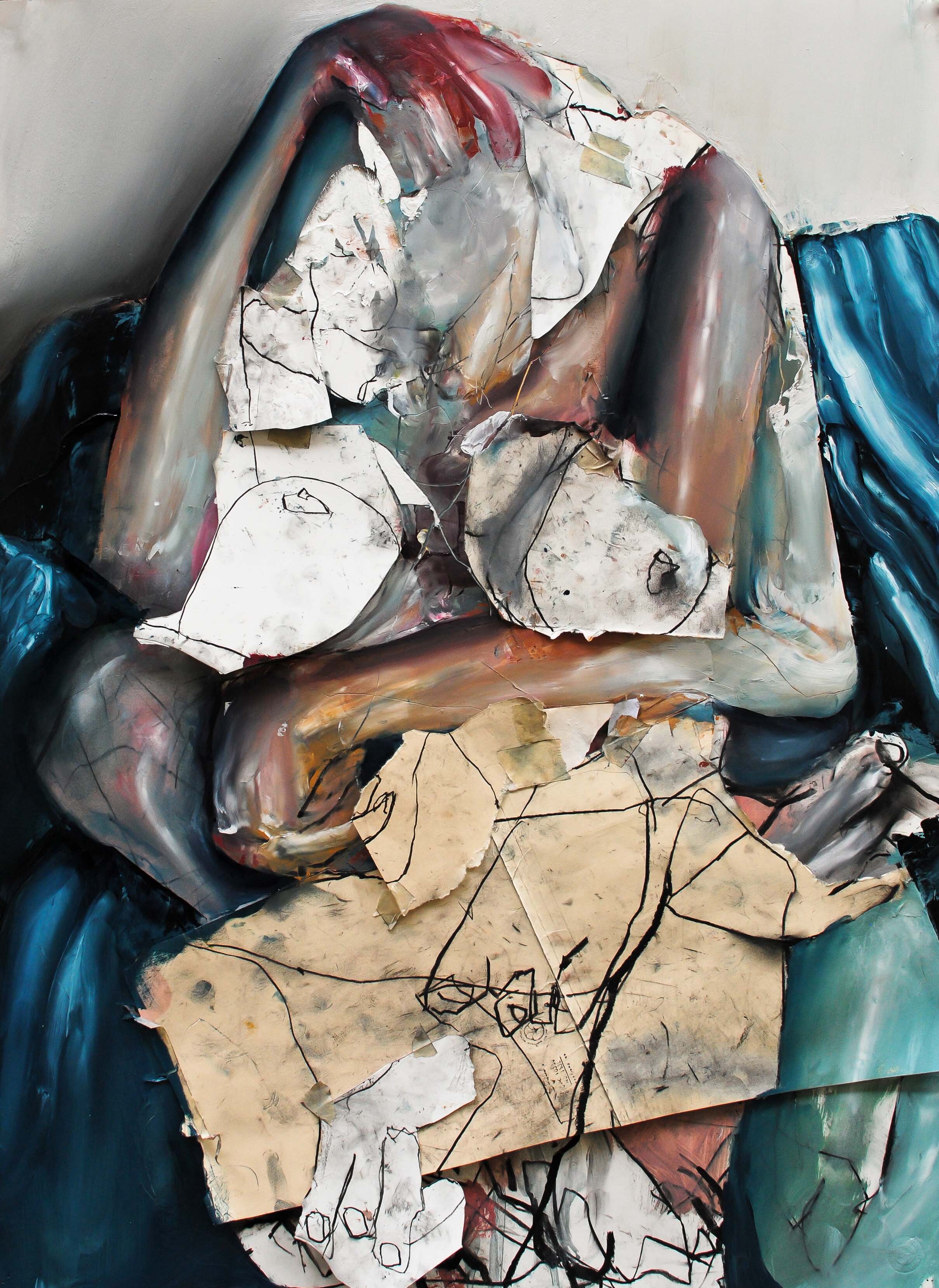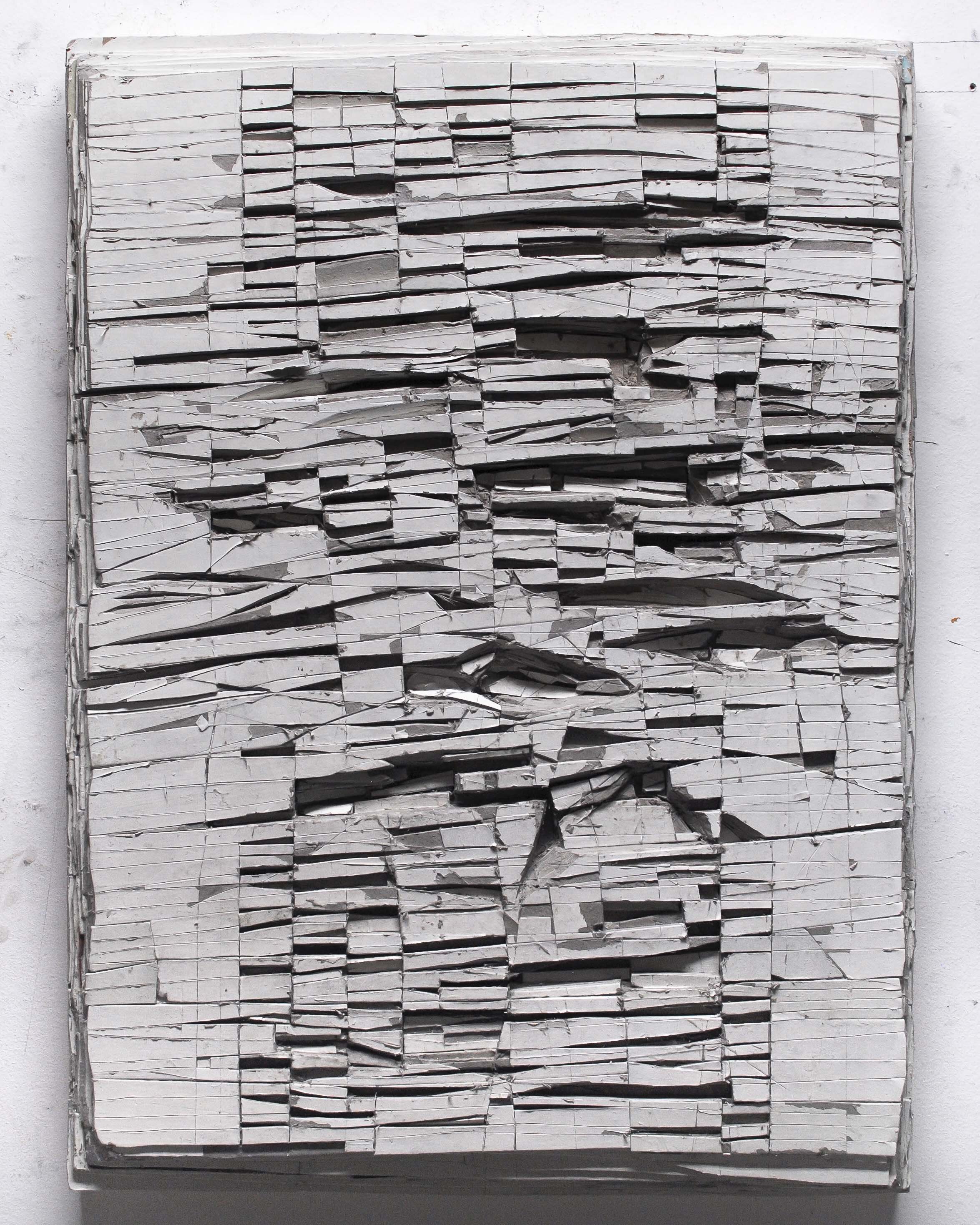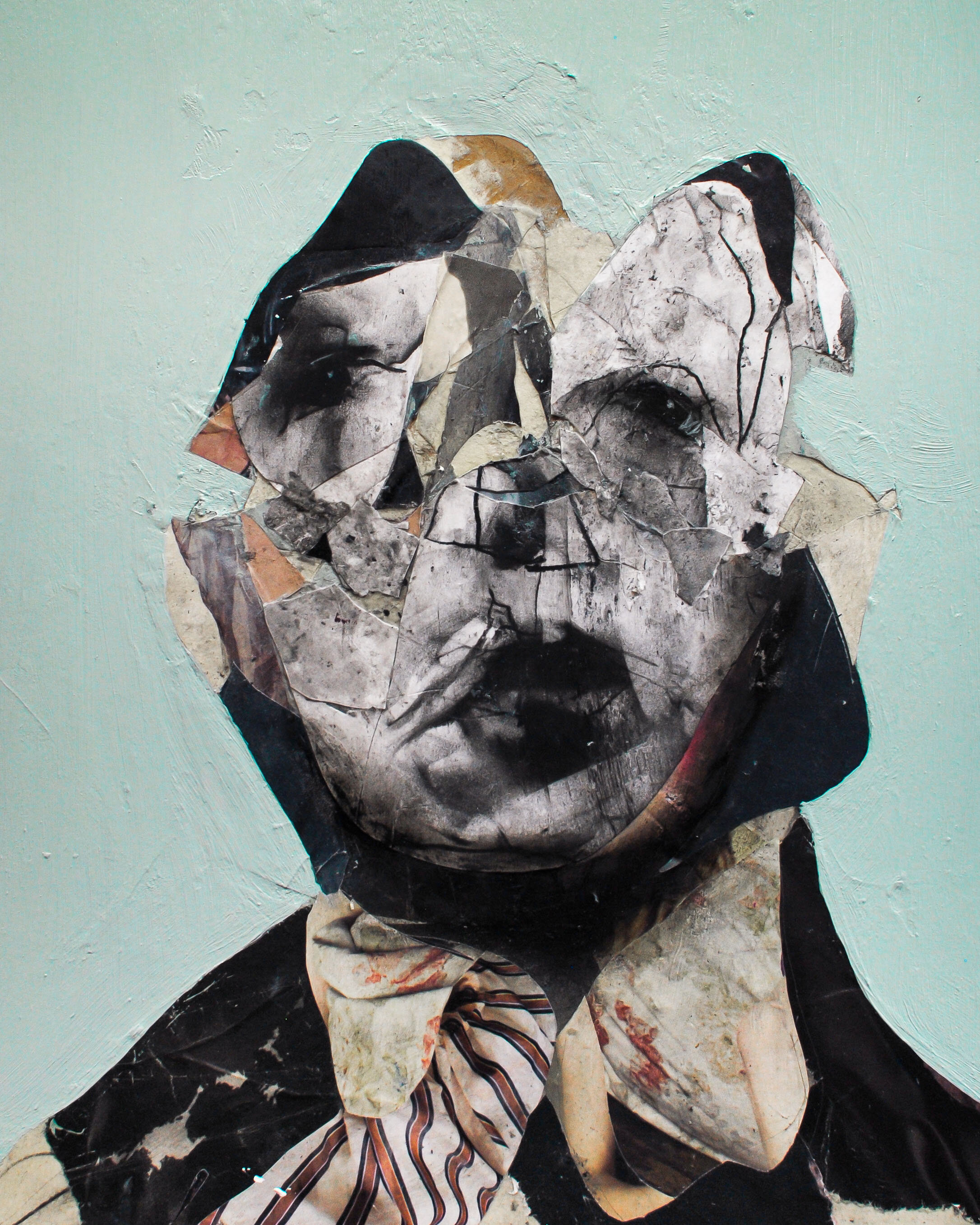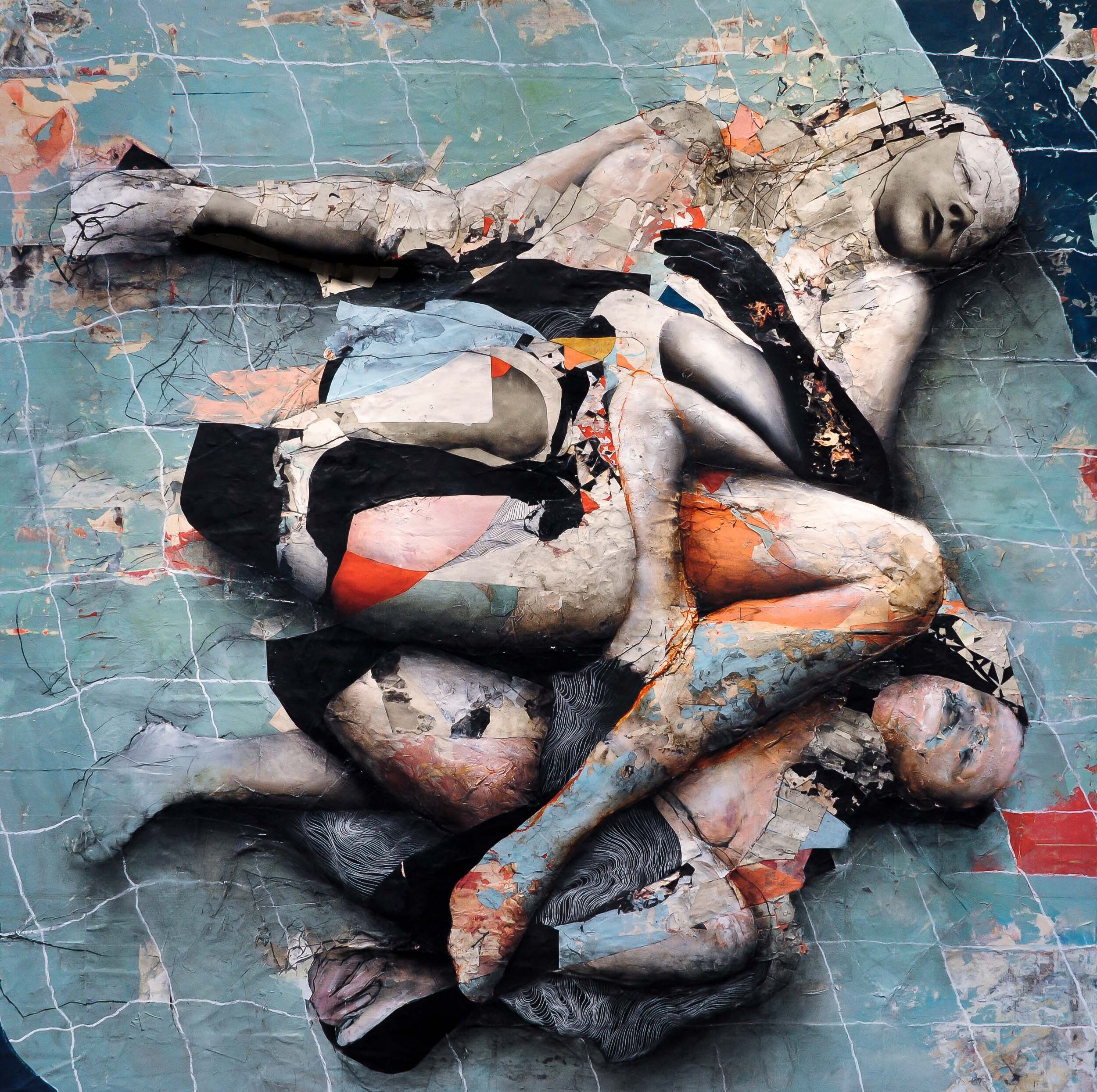Downtime Interview w/ Paul Cristina
Artist workspace
1) Location?
I currently live and work in Los Angeles, CA 🇺🇸
2) Years collaging?
That’s a difficult question to answer because I don’t exclusively do straightforward collage. And if I do, then it’s usually done for the purpose of creating a study piece that might serve as a blueprint for a future painting. I don’t think of what I do as collage. I think of what I do as building paintings. Collage, in terms of arranging, gluing down or assembling disparate elements together, is something that I use as a part of a much larger process. In other words, I use collage as an ingredient in a larger recipe of other mediums that get processed together. With that being said, I have been making art on canvas since about 2008, but I didn’t start taking it seriously until 2016.
3) What do you love and hate about collage?
The thing that displeases me the most about collage is its tendency fall into the realm of a contrived crafty appearance when executed in the wrong hands. There is a thin line that collage frequently straddles between fine art and craft. It can easily exist in either realm depending on the individual’s approach and style. At its most contrived and generic, collage can easily become very cliché and predictable, which can cause it to become relegated to the despicable depths of ridicule and mediocrity, and it gets prevented from being taken seriously.
What I love about collage is its ability to open new creative pathways. It’s about combining disparate elements together from various sources in order to create something that had never existed before.
I regularly use collage as a really effective experimental device that often opens up new and exciting ways to think creatively. Collage used as a thought process allows people to access certain creative sensibilities and it can reveal new ways of thinking that were previously unknown to them. Collage then becomes a way of problem solving and a way of approaching the art of composition. In that sense, I don’t think of collage as a medium, I think about it as an entire thought process – I use it as a way of developing solutions – it’s a way to solve problems.
4) Biggest influences?
Robert Rauschenberg was probably my first major visual art influence when I first came across his work in a library around 2007. I was immediately blown away by the inventiveness that was very clearly present in his work throughout his entire life - I endlessly admire his continuous need to explore and experiment with materials. His “combination” paintings in particular served as my first introduction into the world of mixed media, and I went on from there. John Zorn the musician/composer is a huge in influence with respect to combining disparate elements together. In some of his earlier projects, he was basically collaging with blocks of sound and used it as a way to combines disparate moods and aesthetics. For example, his combination of combining jazz with thrash metal influenced me with a whole new way of thinking about combining different elements together in order to create something new and unique.
5) Analog Vs Digital?
Analog vs. digital: I just remove “vs.” and replace it with “&”. It’s not a fighting match, and it would be idiotic to think about it that way. Those two worlds should be working together, not fighting against each other. Get the best of both worlds and find creative ways to use them together. Analog vs. Digital is an old, tired and dead argument. Use the tools and technology that is available to you in the hopes of discovering something new.
6) How do you spend your downtime?
If not working on art, I’m either reading, watching something, listening to music, cooking or walking. A lot of the times, also I just like to sit and think and look at art.
7) Three tips for someone starting out in collage?
1) Learn from the art that has come before you and find ways to improve upon it and find ways to push it further. 2) Be as weird as possible and don’t hold yourself back. 3) Devote as much time and energy to your work and never compromise your integrity.
8) Up and coming shows or projects we should know about?
I have a solo exhibition scheduled for Feb. 2021. With the current Covid crisis, all other plans are currently on hold at the moment, so I’m just spending time in the studio developing new work.
Links:
Instagram: @paul_cristina
Web: paulcristina.com
Artwork Credits:
Abstract Portrait Study (2018)
How is this Supposed to Feel (2018)
Interzone (2020)
Man with Tits Eating Cereal (2019)
Obsolete Figure Study no.3 (2019)
Pulse Memory (2020)
San Miguel Portrait Study (2019)
Visions of Tokyo (2018)
